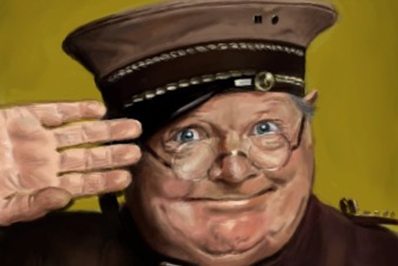We see it in the news constantly: The drug abuse epidemic. Sometimes it’s heroin. Sometimes it’s meth. Sometimes it’s prescription drug abuse. But the results seem to be the same. Those addicted tend to neglect their job, their family, and themselves. Emergency rooms and emergency medical responders are seeing more and more of these people overdose.
Our society’s response is to treat it like a criminal problem instead of a medical problem. And we’ve been doing it that way for 46 years. We declared a War-On-Drugs in 1971, aggressively sent the police after users and dealers to get them off the streets. We tried to teach drug users and drug dealers a lesson by making the punishment so awful it would deter others. We made judges hand out mandatory minimum prison sentences for drug-related convictions. We allowed police to conduct civil asset forfeiture.
Despite these aggressive policies and enforcement actions, the illicit drug trade is worse than ever. In 2008, only 81 tons of the 450 tons of heroin trafficked that year was seized. And that same year 865 tons of cocaine was trafficked worldwide, 165 tons of which was consumed in the United States (more than any other nation). In 2009 drug use was responsible for over 37,000 deaths in the U.S., which exceeded traffic accident deaths that year. Over the past decade, drug-related deaths have doubled, even though all other causes of death declined. In other words, the War-On-Drugs has failed its primary objective (despite receiving over $1 trillion in funding since 1971).
What it has succeeded in doing is fill up our prisons and jails to bursting. In 1974 there were 218,466 inmates in all federal prisons, state prisons, and local jails. By 2014 it exploded to 1,508,636 (600 percent increase). According to a study by Jonathan Rothwell, a senior economist at Gallup, more people are now admitted to prisons for drug crimes each year than for violent crimes or for property crimes. The cost on the taxpayer to house and care for these inmates is now $12.6 billion a year.
Treating drug abuse as a criminal problem instead of a medical problem is making it worse, not better. Our goal should be recovery so that the previously addicted person can overcome addiction, where he gets his life back on track. However, once we as a society label that person a felon, we make it infinitely harder for him to do that. When he is trying to get a job, on job applications he is forced to check the box labeled “Have you ever been convicted of a felony?” If he is trying to better his life by going to college, he is ineligible to receive financial aid to pay for college because felons aren’t eligible for financial aid. We are putting obstacles in the way of achieving our goal.
What are we hoping to accomplish by continuing this failed War-On-Drugs policy? The last 46 years has proven that even if we pass a plethora of get-tough-on-drugs laws, spend a trillion dollars, and put 600 percent more people behind bars, it will not decrease the number of people getting drugs and getting addicted to drugs. Instead, we need to treat it as a medical and mental health problem, not a criminal problem. The first step to doing this is ending the War-On-Drugs and all the problems it created. This will allow our society to then focus our resources toward addiction treatment, recovery, and prevention, and actually solving the problem.

